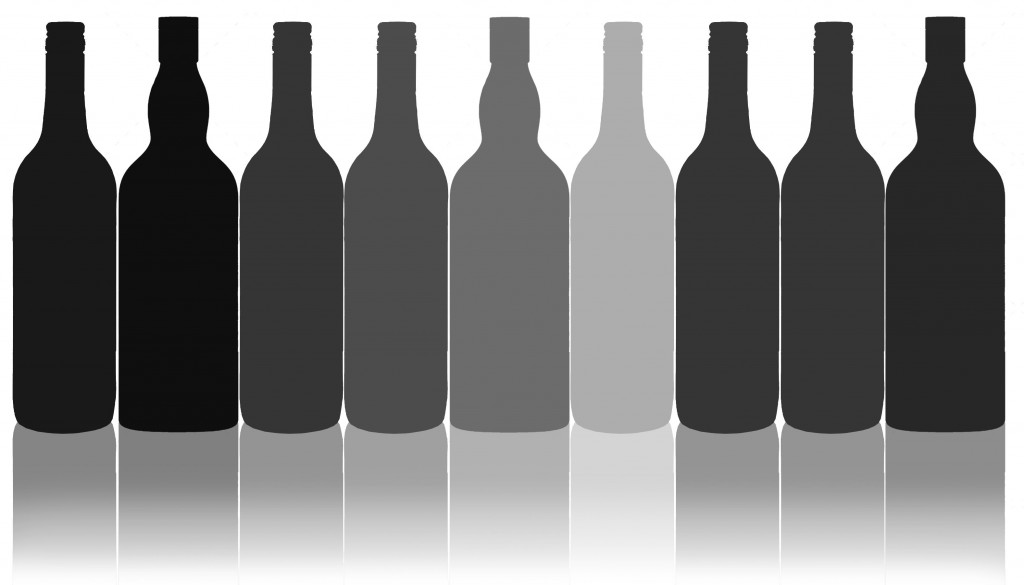Is grey market distribution – trading outside authorized channels – an inherent part of international business, particularly in the spirits industry? And is the duty free channel – where so many mullti-national companies have a huge flow of products trading all around the globe – an integral player in this trans-border system? Does grey market distribution destroy brands, or does it allow brands to enter markets that might otherwise be closed to them by prohibitive barriers? Whatever side of the argument you are on, grey market distribution is a “serious topic which merits some discussion” noted an experienced brand owner, one of the dozen who participated in an examination of the topic with Travel Markets Insider for this article. While grey market distribution has always been around, it appears to become more prevalent when economic times – like those of today — are more challenging. Please note that due to the sensitivity of the topic, we assured respondents that all of their comments and insights are being presented anonymously. TMI sincerely thanks all of the executives – brand owners, agents and distributors from around the world — who took the time to share their very candid insights with us, which we here present below. Lois Pasternak reports.
There is nothing black or white about the grey market when it comes to selling spirits, especially in the duty free channel. It isn’t even that some people hate it — (“it is toxic” scoffs one brand owner), and some people don’t – (it is a route to market argue several others), but quite a few of our respondents admit that “it depends.” Nevertheless, everyone who spoke with us agrees that it is part of the industry and not likely to go away any time soon.
“Wow, that’s a tough one,” responded one senior industry official when asked for a comment: “There are some companies that adamantly fight grey market incursion to protect their brand’s images, while for other companies, it is a legitimate business. But if you have built a premium brand and all of a sudden the market is flooded with your product at 30% under your price, you will not be happy.”
A case in point: The price of Scotch whisky and vodka recently dropped on the Uruguayan Brazil border and was traced to a group of smaller shop operators who had imported several containers ex Holland. Dealing direct like this allowed them to reduce their prices, but subsequently, the bigger operators were forced to reduce their prices in order to compete.
“While this is all good for consumers in the short term, it will take a very concerted effort to get prices back where they should be,” commented the industry veteran relating this story. Note that these small operators had done nothing illegal to get their product to market.
At its most basic, the grey market –often referred to as the parallel market, and in some cases the informal market — is defined as the trade of a commodity through distribution channels that are unintended by the original manufacturer.
Definitions from most of the brand owners were variations on this theme:
“Grey market is about the trade of products sold to a non-authorized channel and unintended by the manufacturers,” added one brand owner. “Stock sold from companies/ individuals into territories that do not have the ‘approval’ from brand owners,” noted another, and “Product dedicated for one market/channel that is shipped to a different market,” said a third.
Others went into more detail: “The opportunity to sell brands across different markets and regions based on the fact that different markets/channels receive different prices for brands which have different demands in each market…” explained one international distributor/agent.
Or how about this brand owner description: “Grey market is an informal or parallel market. Product that has been sold at a certain price for a specific channel (such as GTR) and with potentially A&P support on top also, then sold on informally to other markets, typically in another region and/or domestic market in order to benefit from discrepancies in pricing channels.”
Or this one? Is this brand owner more cynical, or more realistic? “Grey market is irregular import – a way to get around the official importer/sales to a market you are not allowed to supply. If you buy a case in a border shop it may be smuggling; if you buy a pallet of liquor or more and take it in for resale it is grey/parallel.”
Several respondents used the term “opportunistic selling” while another distributor candidly said it is a “route-to-market.”

Greed or Need?
So how did this parallel supply route develop?
“Greedy suppliers, distributors and duty free customers trying to make a fast dollar,” argues one respondent, who has been behind the growth of some very important brands internationally.
But others see the rationale behind the grey market as more complicated, with both external and internal forces driving the business.
Externally, price differences and inconsistencies between continents and countries, and fluctuations of currencies and exchange rates are factors behind paralleling. Big tax differences between two neighboring countries (ie Paraguay vs Brazil, Panama vs Colombia) is another significant factor driving grey market sales.
“The grey market as such is a combination of different factors; trade, free zones or reduced-duty zones, like the borders in Uruguay and Paraguay, and porous borders. Consumers, governments, retailers, traders and producers are all part of the system,” said a distributor.
Another respondent cited high import tariffs on domestic markets and poor/corrupt border control along with lackluster customs enforcement for encouraging parallel sales. But the fact is that in certain cases where barriers to domestic entry are restrictive and prohibitive, parallel distribution may be the only way to market.
Along these lines, some respondents cited companies that have reportedly used grey market distribution to gain market share in the domestic market, in areas such as Latin America, through lower cost entry via the border business, which have enabled them to be competitive and gain market share quickly.
“Many markets, due to legislation, were not open for bona fide import hence parallel develops. Brazil is a clear example, as are all the Muslim countries today—Pakistan and Iran, for example, are huge parallel markets. We are now seeing Southeast Asia, Myanmar, China as well, as gigantic parallel markets,” explains a brand owner.
“Brazil was built that way. Millions of cases were shipped to Panama and Aruba, and transshipped to Bolivia, Paraguay and Venezuela for parallel into Brazil to get around the restrictive legislation, done on purpose by the exporting companies. Panama and Aruba were among the biggest destinations for Scotch in the 80s and 90s, and perhaps still are according to Scotch Whisky Associations,” he notes.
Re-export and informal distribution –other terms for grey market –can also be a Route to Market into domestic markets like San Andrecitos in Colombia, points out another brand owner, adding that in many cases the product usually does not pay the proper tax to enter a specific market (ie: “sacoleiros” into Brazil from Paraguay border busines).
In these cases, Route to Market is kind of an “official” grey market, suggested another brand owner. “But with RTM business like this, there is an agreement between the manufacturer and the retailer/ wholesaler, covering such factors as volume, price, destination and distribution,” he notes. There is control, in other words.
Even when parallel is the only route to market, there can be consequences explains one respondent. In one scenario, using the grey market to enter a country with restrictive import policies could help develop awareness and demand for a brand, setting it up for when the market opens in the future. Other times you may destroy your own market, driving down prices and margins, and damaging brand loyalty. “But paralleling into a closed market like Pakistan or Iran, which is unlikely to open up, will not damage your brand, and if the market does open at some point, you are a known brand,” he continues.
The so-called “internal” forces behind the grey market are fed more by greed than need, both from third-party traders and from larger companies pushing for volume at the end of the month and the year, say the respondents.
“To me the grey market was developed by traders and operators not looking to build brands but simply to develop a commercially successful enterprise,” notes one brand owner.
Traders and distributors – low cost companies who work on a low margin and look for “easy” sales opportunities abroad—come in for much of the blame.
“As soon as a brand is successful, the parallelers come out. There are price sheets every day, mostly from the Netherlands or Belgium. They offer you product and ask ‘Do you want the product with the codes or without the codes?’ There are two different prices if you want the parallel supplier to ship the goods,” says another.
Another agent sees a combination of factors in play: “public companies need to deliver numbers constantly for shareholders and cannot afford a sales decrease, so they seek out opportunities to move stock into markets with less favorable buying conditions,” he notes.
In many companies it is/was the accepted culture to parallel towards the end of the fiscal year so coworkers could get their bonus.
“If you don’t care where your product goes, you can always reach your numbers,” said another executive, who insists that much of the grey market is supplier driven, and much of it a bonus issue. “And I don’t see it changing unless we change the bonus culture and adhere to realistic volumes of what a channel can bear.”
No long term benefit
In an interesting observation, all of the respondents – even those who admit they have used grey market distribution — point out that in the long term, the grey market does not benefit most of the industry.
“Brands lose out the most, both financially and from an image point of view,” was a common theme from the respondents.
“[The grey market] really destroys brands and markets, because the distributor is out there building the brand and all of a sudden some duty free operator floods product in the market,” asserts one well-known owner.
Several noted that even though consumers may benefit on price in the short term from grey market sales, they also lose out on such variables as innovation and brand engagement when investment becomes restricted due to lower prices. Furthermore, the lower prices may not last forever, said one: “Over time [the lower price] will become unsustainable and once larger brand owners take a larger share of the market, they will be able to drive prices up again.”
The loss of control over your brand – and your business –was a recurrent theme.
“When goods start leaking to other legitimate markets that are not under your control it can result in cannibalization of existing business,” noted another owner who was behind the growth of some iconic brands. “When prices in the marketplace dropped for certain products it had a domino effect on other markets, seriously damaging the profitability in the short term,” pointed out another owner.
Grey market volumes that get too large, and prices that go too low, can seriously impact the regular market and retail business, said several respondents: “We can lose control of our prices and our product positioning,” one insists, and in so doing “grey market also affects our brand image.”
“The grey market is not a brand building channel, it’s fully driven by consumer demand,” notes one of the distributors.
In a more philosophical observation, one long-time spirits industry owner notes: “Short term you sell a container, and everyone is happy. But medium term you may destroy your own market due to lack of trust, decreasing prices/margins and lack of brand loyalty. I paralleled to markets that later damaged my business.
“When you parallel to get some extra business in a market in a year, it normally backfires next year,” he admits.
So is Duty Free the Culprit?
Respondents were divided about the role played by the duty free channel in grey market distribution.
Duty free retailers — operating worldwide or in multi countries, with a huge flow of products trading all around the globe– certainly have the opportunity to supply grey market channels.
“The grey market is equally prevalent in domestic markets as it is in duty free,” said one, “while duty free is not synonymous with the grey market, it definitely contributes to the problem,” said another.
“I do not see grey market coming through the travel retail airport stores, but there are other channels (ie Diplomatic, Border business and Airlines) where it is difficult to control 100% of the final destination of the goods, especially since operators usually don’t share their figures. And these channels receive important price support from brand owners because volumes are big,” noted another.
“Duty free is a highly respected and important channel of trade, but one of its stepchildren is parallel. However, all aspects of the trade are involved in parallel from CEOs in London and Paris to ‘unshaved ship chandlers’ in Antwerp and Colon,” colorfully noted another owner. “A CEO can just call [using grey market distribution] a strategic move towards a better brand positioning in a given market.
“All brand companies parallel or quietly accept that their brands are paralleled,” he argues.
And as one respected owner of premium brands concluded:
“The grey market has always existed and will always exist as long as price differences exist in different countries, with cycles based on economic performance of countries and companies. Grey market distribution has gone up and down in the last decade and is very dependent on exchange rates. At the end of the day it is simple economics of supply and demand.”










